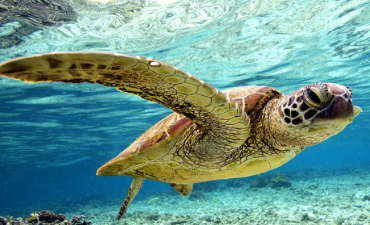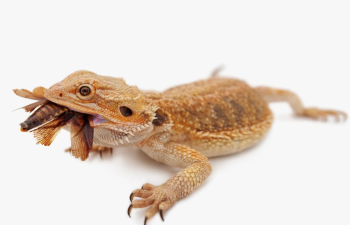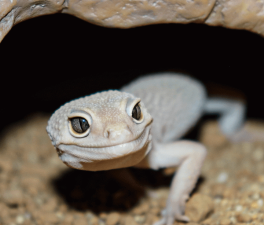Corn snake. Corn snake is also commonly called corn snake. It is a kind of snake native to America. Corn snake is a relatively small snake, non-toxic, and has a certain ornamental value because of its beautiful color. Ball python. Ball python is native to Africa. It is named ball python because it will roll its body into a ball like a ball when it encounters danger. Ball python is also a non-toxic pet snake. It is also relatively docile and does not actively attack humans. However, the environmental requirements for raising ball pythons are higher than corn snakes.
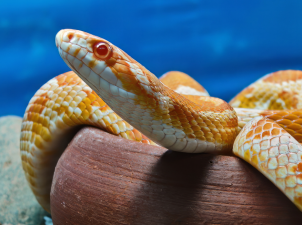
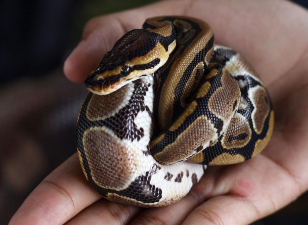
Corn snake. Corn snake is also commonly called corn snake. It is a kind of snake native to America. Corn snake is a relatively small snake, non-toxic, and has a certain ornamental value because of its beautiful color. Ball python. Ball python is native to Africa. It is named ball python because it will roll its body into a ball like a ball when it encounters danger. Ball python is also a non-toxic pet snake. It is also relatively docile and does not actively attack humans. However, the environmental requirements for raising ball pythons are higher than corn snakes.
Basic information about corn snakes

Corn snakes, native to dry woodlands, swamps and farmlands in the southeastern United States and the Gulf Coast, have now become the new favorite of reptile lovers around the world.
◉ Basic information
Scientific name: Elaphe guttata
Lifespan: about 12-15 years
Suitable temperature range: 21-32℃
Relative humidity requirement: 75-80%
◉ Diet and personality
Corn snakes are gentle, non-toxic, and suitable for breeding. When raising them at home, it is recommended to feed them white mice and small lizards. In addition, you can also provide a variety of nutritious foods, such as raw quail eggs, duck, chicken shreds, etc. (but please note that long-term single feeding is not recommended). In the juvenile stage, you can feed lizard tails and mouse tails.
The hibernation period is from November to March of the following year, and sexual maturity is reached in about 2-3 years. The mating period is concentrated from March to August, and each egg can reach more than 6-30 eggs, and the incubation period is about 60 days.
Appearance characteristics and types of corn snakes
◉ Appearance characteristics
Corn snakes, a snake with a total length of 80-120 cm and a maximum length of 182 cm, have a colorful appearance. Their colors vary, ranging from gray, gray-brown to khaki, orange, etc. These color tones are often inlaid with black-edged red or reddish-brown markings, which are unique. The abdomen presents a checkered pattern of light and dark colors, and the ventral surface of the tail is presented in straight stripes. It is worth mentioning that some gray corn snakes have black checkered patterns on their abdomens, so they are also directly called "corn snakes".
Corn snake breeding methods

◉ Breeding equipment
The equipment required for breeding corn snakes is relatively simple, a tall, spacious, ventilated and sturdy breeding box is enough. A sturdy top cover must be installed on the top of the breeding box to ensure that the snake will not escape. In the breeding box, you can arrange some dead wood, artificial turf or newspapers, as well as stone caves for hiding, etc. according to your personal preferences. In addition, you need to prepare some dead branches in the breeding box (for use when it sheds its skin) and water basins (for drinking water and bathing). If conditions permit, you can also equip some reptile lights and power consumption equipment for viewing and winter insulation.
◉ Feeding suggestions
When feeding corn snakes, small white mice should be selected as food, and each feeding should be 7-10 days apart. It should be noted that you should not feed too large or too much food to avoid vomiting due to excessive or too large food. In addition, they should be avoided from being disturbed for a period of time after each feeding to prevent vomiting, as vomiting of corn snake larvae after feeding can be fatal.
Basic information about ball python
Scientific name: Python regius
Classification: Belongs to the genus Python of the family Pythonidae.
Distribution: Widely distributed on the west coast of the African continent, including several countries in West Africa, Central Africa and East Africa.
Conservation level: In 2020, it was listed in the "IUCN Red List of Endangered Species" ver 3.1-Near Threatened (NT); in 2023, it was listed in Appendix II of the "Convention on International Trade in Endangered Species of Wild Fauna and Flora" (CITES).
◉ Morphological characteristics
Body size: The body length is generally 1-2.5 meters, the weight is 1.5-4 kilograms, the body is short and thick, the head and neck are clearly divided, and the tail is very short, accounting for less than 10% of the total length.
Body color and markings: The body color is light brown to dark brown, with irregular dark brown markings, a large round or oval yellow spot pattern with a black outline on the back, and the abdomen is white ivory or beige, usually with dark spots. Living habits
Activity rhythm: Nocturnal animals, active at dawn and dusk, hiding in burrows, rodent burrows or termite mounds during the day.
Diet: Carnivorous, mainly preying on rodents, and also preying on birds. Male ball pythons are more inclined to prey on birds, while female ball pythons are more inclined to prey on mammals.
Defensive behavior: When facing threats, they will shrink into a tight ball centered on the head, using darker body color and markings to blend into the savanna habitat and avoid being discovered by predators.
Reproduction method
• Breeding season: Mainly from mid-September to mid-November. Female ball pythons reach reproductive maturity at 27-31 months, and males reach reproductive maturity at 16-18 months.
• Incubation: After laying eggs, female ball pythons will coil around the nest, absorb heat from the sun to raise their body temperature, and then use their bodies to heat the eggs. The incubation period is about 2 months.
◉ Artificial breeding
• Breeding environment: A spacious, ventilated cage is required, equipped with a hiding place, a water basin and a heating lamp to maintain a suitable temperature.
• Feeding frequency: Growing ball pythons are fed once a week, and adult ball pythons (over 3 years old) are usually fed once every 2-4 weeks.

